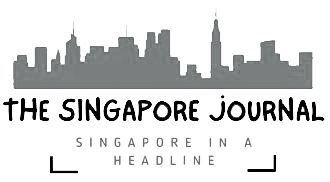Trusted platform, secured by
Spider Lift For Sale
Buy new and used Spider Lift
TRUSTED PLATFORM POWERED BY
Official partner by Antbuildz.com
Secure your purchase with Antbuildz Purchase Warranty and get one year of free all-risk insurance when buying from a Verified Partner. (T&Cs apply)
used
4.3/5
Partner's Rating
Star ratings are provided to reflect the owner’s equipment quality, breakdown respond time, delivery/collection punctuality and communication promptness.
TE-0625-3665
Singapore Mainland
Platform Height : 33 Meter
USD82,650.59
SGD110,000
Platform Capacity - Unrestricted
250 KG
Platform Height
33 Meter
Explore More Items!
Buy new or used Spider Lift equipment at the best prices across Southeast Asia, including Singapore, Malaysia, Indonesia, Thailand, the Philippines, Vietnam, and more. Instantly compare all available units—new or used—on Antbuildz.com for the best deals in the region. Purchase with confidence and enjoy free 1-year all-risk insurance on every equipment purchase
About Spider Lift :
1. What is a Spider Lift?
A Spider Lift is a type of compact, tracked aerial lift designed to provide access to hard-to-reach areas in tight, challenging environments. These lifts are typically used for elevating workers to heights in outdoor and indoor environments where space is limited, such as narrow pathways, slopes, or uneven terrain. The name "spider lift" comes from its spider-like legs, which provide stability on uneven ground while offering high maneuverability. Key Features:
- Tracked Base – Unlike traditional wheeled lifts, spider lifts have tracks that provide better stability and allow the lift to work on soft or uneven terrain.
- Compact Design – These lifts are often much narrower and shorter than conventional lifts, making them ideal for working in confined spaces.
- High Reach & Flexibility – Spider lifts can extend to significant heights, typically ranging from 10 meters to over 40 meters, depending on the model.
- Articulated Boom – Many spider lifts feature an articulated boom, allowing for precise positioning and flexibility to reach difficult angles.
- Low Ground Pressure – The tracks help distribute the weight of the machine, reducing ground pressure and allowing it to navigate sensitive surfaces without causing damage.
- Rotating Platform – Some models feature a rotating platform, enhancing accessibility to multiple work areas without needing to reposition the lift.
Common Applications:
- Building Maintenance – Ideal for cleaning windows, replacing lights, or maintaining facades in high-rise buildings.
- Tree Care & Arboriculture – Used for tree trimming or removing branches in hard-to-reach locations.
- Construction Sites – Accessing areas that traditional boom lifts or scaffolding cannot reach.
- Indoor Jobs – Perfect for warehouses, factories, and indoor arenas where space is limited, and height is needed.
- Film & Event Production – Often used for lighting, camera positioning, or rigging in tight or outdoor spaces.
2. Why Buy a Spider Lift?
A Spider Lift, also known as a compact crawler boom lift, is a highly versatile and maneuverable access platform ideal for challenging job sites. Here’s why you should invest in one:
- Exceptional Reach in Compact Spaces: Spider lifts offer impressive vertical and horizontal reach while maintaining a compact design—perfect for tight indoor and outdoor areas.
- Access Hard-to-Reach Areas: With articulated or telescopic booms and extendable outriggers, spider lifts can reach over obstacles, around corners, and across uneven ground.
- Lightweight and Floor-Friendly Design: The lightweight build and rubber tracks minimize ground pressure, making spider lifts suitable for use on delicate floors, lawns, or tiles.
- All-Terrain Capability: Rubber-tracked undercarriage and automatic leveling outriggers allow safe operation on slopes, stairs, or rough terrain where wheeled lifts cannot go.
- Fits Through Standard Doors and Gates: When retracted, most spider lifts are narrow enough to pass through standard doorways and gates, ideal for building maintenance and atrium work.
- Ideal for Indoor and Outdoor Applications - Used widely in:
- Tree care and landscaping
- Building and façade maintenance
- Window cleaning
- Church or museum restoration
- Industrial inspection and repairs
- Efficient and Safe Operation: Features such as remote controls, emergency lowering, tilt alarms, and fall protection anchor points ensure both ease of use and safety.
For jobs that require high reach, complex positioning, and terrain adaptability in compact spaces, a spider lift is a top-tier access solution.
3. How to Choose the Right Spider Lift During Purchase?
Spider lifts come in various configurations. Choosing the right one involves understanding your working conditions, space limitations, and access requirements. Here’s what to consider:
- Working Height and Outreach: Determine the maximum vertical height and horizontal outreach needed. Spider lifts typically offer working heights from 30 to 100 feet or more, with varying reach capabilities depending on boom type.
- Boom Type
- Articulating boom: Offers better flexibility around obstacles
- Telescopic boom: Extends straight for longer horizontal reach
- Weight and Surface Sensitivity: If you plan to use the lift indoors or on sensitive ground, choose a lightweight model with non-marking rubber tracks to avoid surface damage.
- Power Source Options
- Electric or lithium battery: Best for indoor, quiet, and eco-sensitive applications
- Diesel-powered: Ideal for heavy-duty outdoor use
- Hybrid models: Provide flexibility for mixed-use environments
- Access and Setup Space: Ensure the collapsed width and height of the lift allow it to pass through your access points (e.g., doors, gates, hallways). Look for models with automatic or hydraulic outriggers for quick and safe setup.
- Ground Conditions and Terrain - Choose models with:
- Adjustable outriggers
- High ground clearance
- Slope compensation systems for uneven terrain
- Platform Capacity: Check the lift's safe working load (SWL)—usually between 200–265 kg—to ensure it accommodates the operator and tools.
- Safety Features - Prioritize lifts with:
- Auto-leveling stabilizers
- Emergency stop and descent systems
- Tilt alarms and overload sensors
- Guardrails and harness anchor points
- Ease of Transport and Storage: Some models are compact and lightweight enough to be towed by a trailer, making them easier to move between job sites.
- Manufacturer Reputation and Support - Choose a spider lift brand with:
- Proven reliability and build quality
- Global service network
- Spare parts availability
- Safety certifications (e.g., CE, ANSI)
Always conduct a job site survey to match the spider lift to your environment, reach needs, and safety requirements. A proper fit ensures better efficiency and lower operating risk.












































